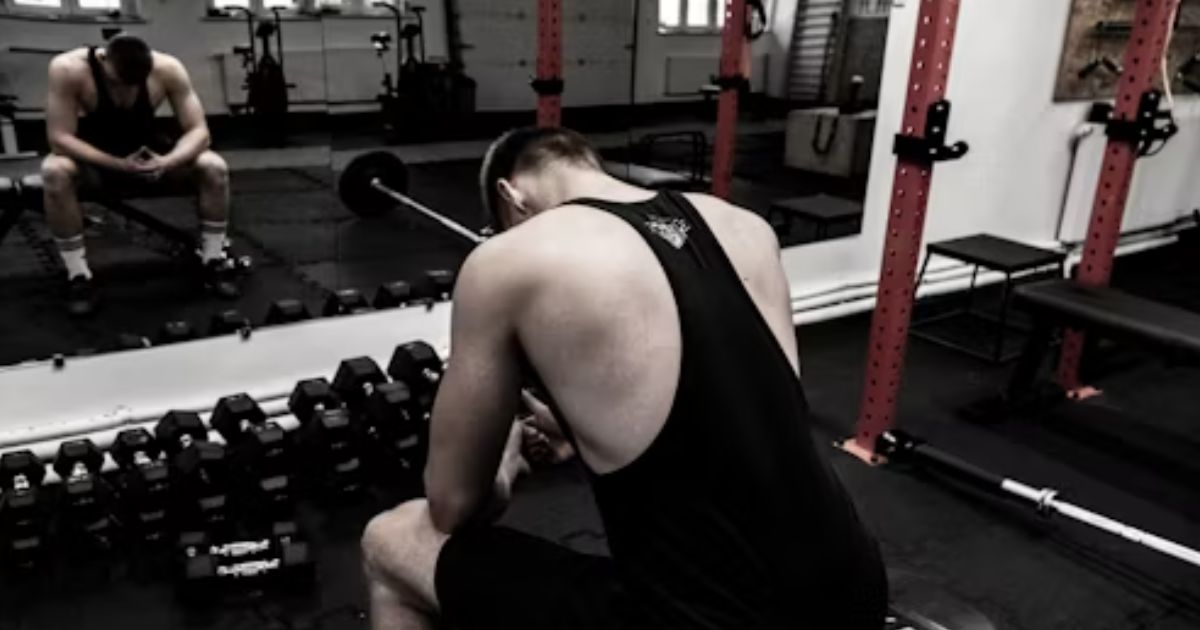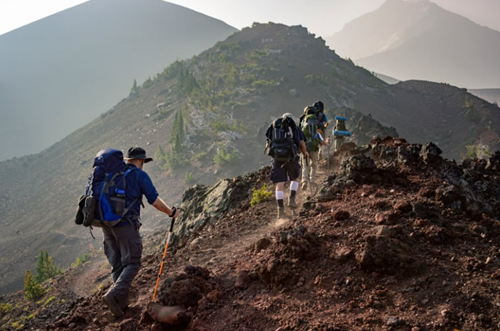Whether you’re a seasoned athlete or just beginning your fitness journey, rest and recovery tips are often the unsung heroes of real progress. While workouts get all the attention, it’s the time between sessions that allows your body to rebuild, strengthen, and adapt. Skipping rest doesn’t fast-track results—it slows them down. Recovery isn’t about being lazy; it’s about being smart with your energy and giving your body what it needs to come back stronger.
Incorporating rest and recovery tips into your routine isn’t optional—it’s essential. From improving performance and preventing injury to supporting mental well-being, these tips play a key role in long-term success. Whether it’s a full rest day, quality sleep, or active recovery like stretching or light movement, these moments of pause are where growth truly happens. So, if you’re aiming to move better, feel stronger, and stay consistent, rest isn’t a break from your workout plan—it’s an important part of it.
What Is Rest and Recovery?
- Rest: Refers to periods without physical training, including full rest days or short periods of inactivity throughout the week. Provides the body a chance to recuperate, restore energy levels, and reduce accumulated stress from exercise.
- Recovery: Involves intentional strategies that aid the body in repairing and adapting after physical exertion. Includes practices like stretching, foam rolling, massage, adequate sleep, hydration, and proper nutrition. Plays a crucial role in muscle rebuilding, reducing fatigue, and improving overall physical resilience.
Boost Your Fitness with Proven Rest & Recovery Tips
1. Nutrition and Hydration: The Unsung Heroes of Recovery
You can stretch all you want, but if you’re not fueling your body right, recovery will be incomplete.
- Protein repairs muscle tissue.
- Carbs replenish glycogen stores.
- Fats help with hormone balance and inflammation.
- Water plays a vital role in flushing out toxins from the body and supporting the repair of cells. Staying properly hydrated is essential for effective recovery and overall health.
Recovery starts in the kitchen. Don’t skip your post-workout snack!
2. Tools and Techniques for Better Recovery
- Foam rolling or massage guns: Help relieve tight muscles and improve circulation.
- Stretching and mobility work: Keeps your body flexible and injury-free.
- Cold therapy (ice baths): Reduces inflammation and can speed up healing.
- Compression gear or massage therapy: Aids in blood flow and muscle recovery.
- Sleep tracking: Helps ensure you’re getting quality rest to repair and recharge.
3. Listening to Your Body
You are your best coach. Tune in. Recovery is highly personal. Signs of under-recovery may include:
- Chronic fatigue
- Sleep disturbances
- Mood swings or irritability
- Persistent muscle soreness
- Plateaued or declining performance
Respect the signals. Pushing through isn’t always progress—it’s sometimes punishment.
4. Building Recovery Into Your Weekly Routine
Incorporating rest days doesn’t need to be a matter of guesswork. Here’s how to make it a natural part of your fitness lifestyle:
Weekly Sample:
- Monday: Strength training (upper body)
- Tuesday: Cardio or active recovery (light jog, yoga)
- Wednesday: Strength training (lower body)
- Thursday: Rest or passive recovery
- Friday: HIIT or circuit training
- Saturday: Fun activity (hiking, dancing, swimming)
- Sunday: Full rest or mobility work/stretch session
Pro Tip: Treat rest like an appointment. Add it to the calendar, just like a workout. Bonus points if your rest involves something that refuels you mentally, too—like reading, nature walks, or catching up on sleep.
5. Tools and Tech to Support Recovery
The modern era of fitness is packed with cutting-edge gadgets, and many are designed with recovery in mind. From wearable trackers that monitor heart rate variability and sleep quality to massage guns and compression sleeves that aid muscle recovery, technology now plays a key role in optimizing downtime. These tools offer real-time feedback, helping to fine-tune recovery strategies based on actual data rather than guesswork.
Smart recovery tools not only enhance how the body bounces back but also help prevent overtraining by flagging early signs of fatigue or stress. By incorporating these innovations into a routine, recovery becomes more personalized, efficient, and effective, transforming rest days from passive pauses into active opportunities for better performance.
- Wearables (like WHOOP, Garmin, and Apple Watch): Monitor heart rate variability (HRV), sleep, and recovery scores.
- Apps (like Calm, StretchIt, or Fitbod): Apps like Calm, StretchIt, and Fitbod provide guided recovery sessions and tailored plans to support rest, flexibility, and overall recovery progress. These tools help users track their recovery routines and integrate relaxation techniques seamlessly into their fitness journey.
- Infrared saunas and cold plunge tubs: These are gaining popularity in wellness circles for their recovery-boosting benefits.
- Sleep trackers: Identify patterns so you can optimize sleep quality, not just quantity.
Investing in recovery gear is investing in your long-term fitness success.
Why Rest and Recovery Matter
The importance of taking downtime seriously includes:
- Muscle Repair and Growth: During exercise, especially strength training, you create microscopic tears in muscle tissue. Recovery allows those muscles to rebuild stronger. No rest = no gains.
- Injury Prevention: Pushing through pain might sound tough, but it often leads to overuse injuries, burnout, and long-term setbacks. Recovery helps reduce inflammation and allows joints and tendons to heal.
- Mental Health Boost: Just like your body, your brain needs a breather, too. Rest days help regulate mood, reduce anxiety, and restore motivation, especially after intense workouts.
- Improved Performance: Ever feel sluggish even though you’ve been training hard? That’s fatigue talking. Strategic rest improves stamina, coordination, and overall workout performance.
How Much Rest Do You Need?
There’s no one-size-fits-all answer, but general guidelines include:
- 1–2 rest days per week for regular gym-goers.
- Allowing a 48-hour break between working the same muscle group, particularly for resistance training, is essential for maximum recovery.
- Sleep: Aim for 7–9 hours per night. It’s the ultimate recovery tool—muscle growth, hormone regulation, and cellular repair all happen while you snooze.
If you’re sore, exhausted, or irritable, those are big red flags from your body saying “Take a break.”
Active Recovery vs. Passive Rest
Not all rest means doing absolutely nothing.
- Active Recovery: Light, low-intensity movement like yoga, walking, swimming, or cycling. It helps maintain blood flow, reduce stiffness, and accelerate healing.
- Passive Rest: Passive rest refers to complete downtime, such as sleeping, napping, or simply relaxing. It is particularly important, following intense workouts, to allow the body to fully recover.
Mix both throughout your week to keep things balanced and sustainable.
Long-Term Benefits of Prioritizing Recovery
When rest is part of your plan, your fitness journey becomes more:
- Sustainable: No more boom-and-bust workout cycles.
- Enjoyable: Less pain, more energy.
- Effective: Better gains, improved stamina, and consistent progress.
Rest days aren’t a sign of laziness—they’re essential growth opportunities in disguise.
Common Myths About Rest and Recovery
Let’s bust a few persistent myths that do more harm than good:
- “No pain, no gain.”
- Pain isn’t always a badge of honor. Soreness can be part of the process, but excessive pain usually signals overtraining or injury. Smart gains come from smart training.
- “Rest is for the weak.”
Rest is for the wise. Top athletes prioritize recovery just as much as their training. If it’s essential for Olympians, it’s beneficial for everyone.
- “Skipping a day results in setbacks in progress.” Not at all. Recovery prevents backsliding by allowing your body to rebuild stronger. One day off won’t erase your progress, but ignoring your need for recovery just might.
- “Stretching is enough.”
- Stretching is great, but it’s not the only piece of the puzzle. Full recovery includes nutrition, sleep, hydration, and sometimes doing absolutely nothing.
Recovery for Different Fitness Goals
Different goals = different recovery strategies.
- Strength Training: Prioritize rest for specific muscle groups. Foam rolling and protein-rich meals post-lift are key.
- Cardio/Athletic Training: Focus on active recovery to reduce stiffness. Incorporate at least one complete rest day to avoid burnout.
- Weight Loss: Even with a calorie deficit, your body still needs energy to recover.
- Flexibility/Mobility: These activities help improve range of motion, reduce muscle tension, and promote relaxation, aiding in overall recovery.
The Role of Mental Recovery
Psychological recovery is equally as vital as physical recovery. Exercise isn’t only about the body; it’s a mental challenge too. Taking time to recharge mentally helps prevent burnout, maintain motivation, and improve focus during workouts. Here’s why your mind deserves downtime too:
- Reduces burnout and exercise fatigue
- Promotes mindfulness and focus
- Supports motivation and consistency
- Improves sleep and stress levels
Activities like meditation, journaling, deep breathing, or even just unplugging from your phone for an hour can do wonders for mental clarity and emotional recovery.
Signs You’re Overtraining and Under-Recovering
Here are some warning signs that indicate it’s time to ease up:
- Persistent muscle soreness that lasts several days
- Unusual fatigue—even after sleeping
- Loss of motivation or enjoyment in workouts
- Irritability, anxiety, or mood swings
- Poor sleep or insomnia
- Decreased performance, plateau, or even regression
If this sounds familiar, it’s your body waving a big red flag. It’s time to hit pause, breathe, and rework your training/rest ratio.
Rest Isn’t a Detour—It’s Part of the Route
In the grand scheme of your fitness journey, rest and recovery are not optional side quests. They are essential to building a strong foundation for long-term success. Think of them as the silent partners in your progress—the unsung heroes behind every personal record, every inch of muscle, every burst of new energy.
Whether your goal is to run farther, lift heavier, or simply feel better in your body, rest isn’t holding you back. It’s what’s helping you move forward—stronger, smarter, and fully recharged.
Balance Is the Breakthrough
There’s a fine line between burning out and showing up stronger, sharper, and more energized—and rest is what keeps you on the right side of it. Fitness isn’t just about pushing your limits; it’s about knowing when to pull back so your body has the chance to recover, adapt, and come back even better. Growth doesn’t happen in the grind alone—it happens in the balance.
So the next time you’re planning your workouts, make sure to pencil in those rest days, too. They’re not just placeholders—they’re power moves. By allowing your body the time it needs to heal and recharge, long-term success is within reach. Your muscles, mind, and future self will all reap the benefits.




